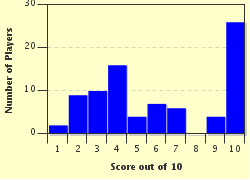Quiz Answer Key and Fun Facts
1. Where in Ancient Egypt did king Amenhotep III build a temple? It was built over an earlier pre-existing temple and dedicated to the great god Amun-Re, the god's wife Mut, and his son Khonsu.
2. The Temple of Luxor lies on the west bank of the Nile River.
3. Even though the Temple of Luxor was built over a previous temple, the building that is seen today was believed to be created by the Pharaoh Amenhotep III. During what Ancient Egyptian period did the king reign?
4. What was the main purpose of the Temple of Luxor?
5. Why was the Opet Festival important for the Ancient Egyptian people?
6. The god Amun-Re was represented as the scarab or beetle-headed man.
7. Why did Amenhotep III have carvings created in the temple that depict the god Amun seated with his mother Queen Mutemwiya?
8. The Temple of Luxor was connected to the Temple of Karnak by a mile long processional avenue lined with statues. What kind of statues where they?
9. How many statues of the great pharaoh Ramesses II (c.1279-c.1213 BC.) currently rest before the Luxor Temple entrance?
10. Alexander the Great is shown on a carved relief in Luxor Temple making offerings to the gods as the pharaoh of Egypt.
Source: Author
Play3Away
This quiz was reviewed by FunTrivia editor
bloomsby before going online.
Any errors found in FunTrivia content are routinely corrected through our feedback system.

